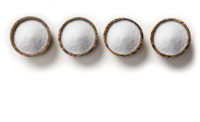Editorial Views
Science of Sodium, Health

In one of this month’s feature articles, a topic is covered—sodium—that’s highly controversial…but only because the actual controversy has been manufactured. The science of sodium and health has been a soapbox issue of mine for two decades, and I can tell you exactly how it started: In late 1995, as a recent dietetics and nutrition science graduate, I was preparing to write a comprehensive anti-salt article. The DASH II study had recently been released and rapidly became a touchstone of salt science. But, something caught my eye: The study authors’ conclusion didn’t square up with the actual results.
Reading and rereading the paper, it was clear that the differences between the groups studied and measurements of sodium intake and blood pressure, although statistically significant, did not show clinical significance. In fact, not only were the blood pressure measurements for the high-sodium group among the least affected by sodium intake, the measurements were well within the margins of error typical to a standard sphygmomanometer used in a clinic setting.
I delved into hundreds of sodium studies. Guess what? To date, research has failed to establish a definitive link between sodium intake and disease in healthy persons. In double-blind, controlled studies looking at salt intake an blood pressure in healthy persons, salt does not apparently cause long-term changes in healthy persons.
There’s more. Emerging research actually indicates possible links between chronic low dietary sodium and elevated risk of certain health conditions.
On the flip side, there’s the obesity epidemic. While salt intake might not permanently affect blood pressure in healthy persons, obesity isn’t a healthy state. And, obesity is linked to inflammation and risk for diabetes. That means the chances of high dietary sodium negatively affecting blood pressure are increased. Millions of people now fall into this category.
There’s no disputing that food and beverage makers, especially those making health-oriented products, are caught between a rock and a hard place: Pressure from consumer demand based on perceived concepts of nutrition is exerted on one side; actual science on the other. For that reason, too, salt enhancers, reducers and replacers are critical ingredients in formulation. But, care must come from the marketing and communications side; any messages pertaining to nutrition must be firmly and clearly based on research, not hearsay. The responsibility is on processors to see that their communications teams not only have the credentials for talking about nutrition issues but also do their homework: investigating the science before crafting their message.
Go on an Adventure with Chris Koetke
Looking for a reprint of this article?
From high-res PDFs to custom plaques, order your copy today!









